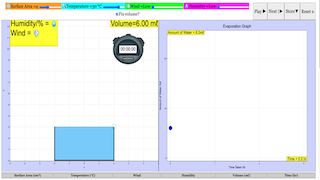Translations
| Code | Language | Translator | Run | |
|---|---|---|---|---|
 |
||||
Software Requirements
| Android | iOS | Windows | MacOS | |
| with best with | Chrome | Chrome | Chrome | Chrome |
| support full-screen? | Yes. Chrome/Opera No. Firefox/ Samsung Internet | Not yet | Yes | Yes |
| cannot work on | some mobile browser that don't understand JavaScript such as..... | cannot work on Internet Explorer 9 and below |
Credits





Francisco Esquembre; Felix J. Garcia Clemente; This email address is being protected from spambots. You need JavaScript enabled to view it.; Rena F; Zed; ShiXiong (idea); fazli1702
end faq
Sample Learning Goals
This lesson deepens students' understanding of factors affecting the rate of evaporation.
- Pri 5 & 6 SCIENCE (2014) (2014)
For Teachers
Evaporation (Surface Area, Temperature, Humidity, Presence of Wind) for Primary School
 |
| For a small surface area, the rate of evaporation of water in the container decreases with time https://iwant2study.org/ospsg/index.php/968 Direct Link |
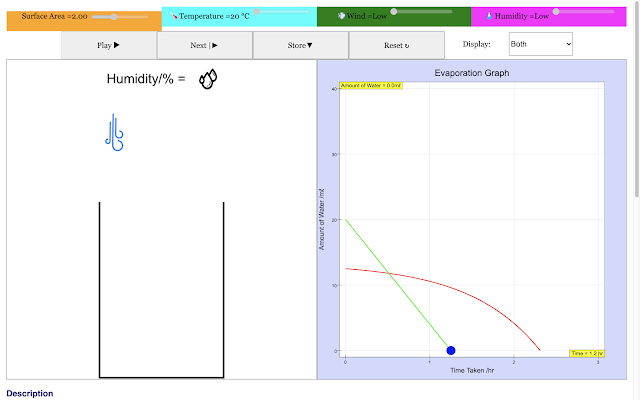 |
| For a middle size surface area, the rate of evaporation of water in the container decreases with time linearly as the surface is constant https://iwant2study.org/ospsg/index.php/968 Direct Link |
 |
| For a large surface area at the beginning, the rate of evaporation of water in the container decreases with time in the blue trail This implies larger the surface area the shorter the time taken to evaporate https://iwant2study.org/ospsg/index.php/968 Direct Link |
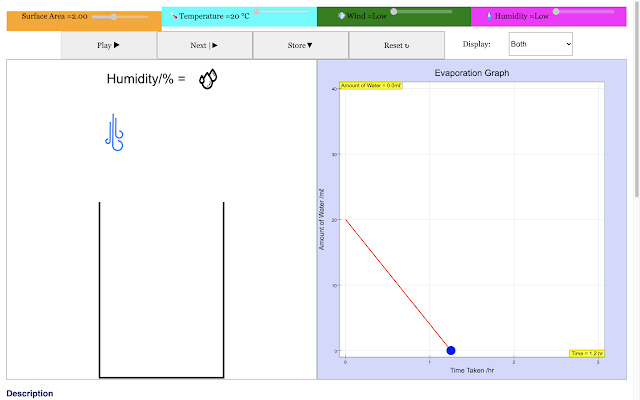 |
| For a low temperature, the rate of evaporation of water in the container decreases with time linearly in the red trail https://iwant2study.org/ospsg/index.php/968 Direct Link |
 |
| For a middle temperature, the rate of evaporation of water in the container decreases with time linearly in the green trail https://iwant2study.org/ospsg/index.php/968 Direct Link |
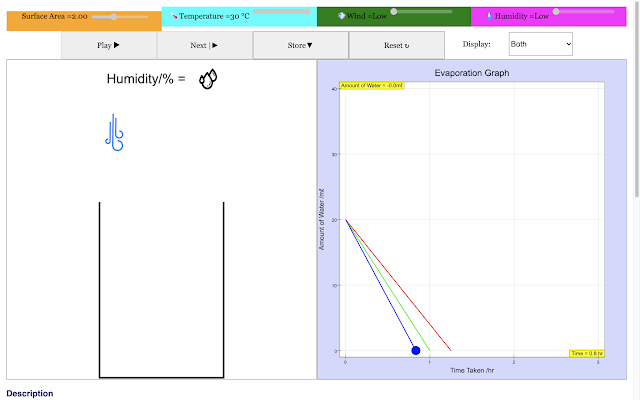 |
| For a high temperature, the rate of evaporation of water in the container decreases with time linearly in the blue trail. This implies higher the surrounding temperature the shorter the time taken to evaporate https://iwant2study.org/ospsg/index.php/968 Direct Link |
 |
| For a low wind condition, the rate of evaporation of water in the container decreases with time linearly in the red trail https://iwant2study.org/ospsg/index.php/968 Direct Link |
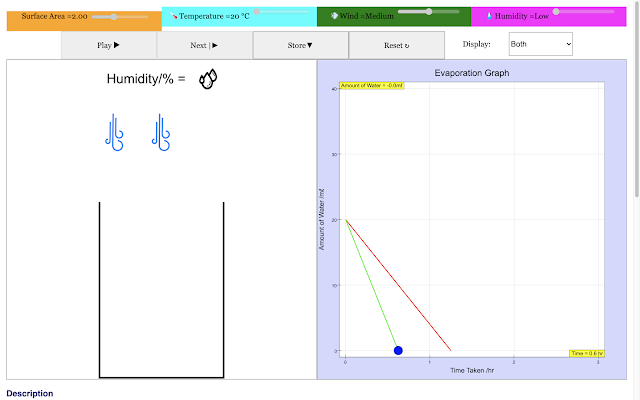 |
| For a medium wind condition, the rate of evaporation of water in the container decreases with time linearly in the green trail https://iwant2study.org/ospsg/index.php/968 Direct Link |
 |
| For a high wind condition, the rate of evaporation of water in the container decreases with time linearly in the blue trail This implies higher the wind the shorter the time taken to evaporate https://iwant2study.org/ospsg/index.php/968 Direct Link |
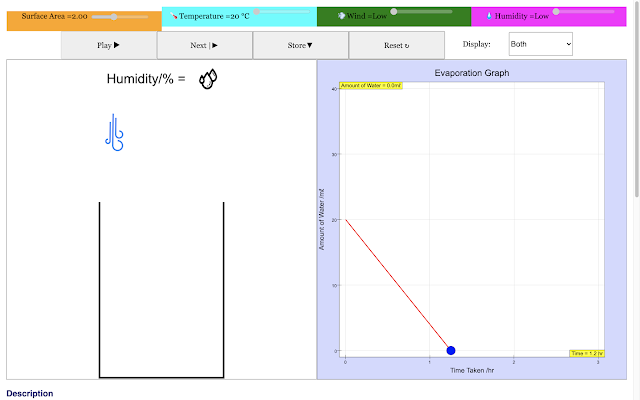 |
| For a low humidity condition, the rate of evaporation of water in the container decreases with time linearly in the red trail https://iwant2study.org/ospsg/index.php/968 Direct Link |
 |
| For a medium humidity condition, the rate of evaporation of water in the container decreases with time linearly in the green trail https://iwant2study.org/ospsg/index.php/968 Direct Link |
 |
| For a high humidity condition, the rate of evaporation of water in the container decreases with time linearly in the blue trail This implies higher the humidity the longer the time taken to evaporate https://iwant2study.org/ospsg/index.php/968 Direct Link |
Research
[text]
Video
https://www.youtube.com/watch?v=4JIz7913EQU
Experiment 1
Change the temperature to 30 ◦c
Click play to see a graph appears
Click store to save the graph at 30 ◦c
Look at the time taken when the amount of water left in the container is zero.
Record the hours the water takes to evaporate.
Change the temperature to 20 ◦c
Record the hours the water takes to evaporate
Study the 2 graphs to compare the rate of evaporation of water.
Which temperature causes the water to evaporate faster?
Version:
Other Resources
https://vle.learning.moe.edu.sg/moe-library/lesson/view/fa3ded3e-8253-418c-b183-5bfd2e316d20?fromCcpm=false
https://vle.learning.moe.edu.sg/moe-library/lesson/view/d2d36336-8fe8-4eb7-bb69-8d813e5a429b?fromCcpm=false


